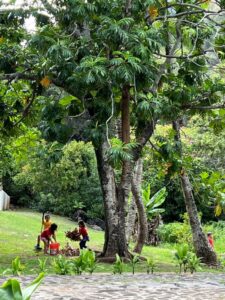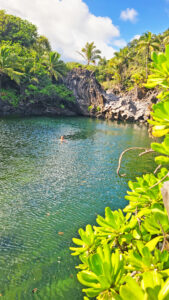County to launch energy cost-savings program
Project to install more efficient lighting, sinks and other equipment
Maui County is embarking on a multimillion-dollar project with an international company in hopes of realizing $73 million in energy and water conservation cost during the first phase.
On Friday, Mayor Michael Victorino announced the $29 million Phase 1 agreement with Johnson Controls, which has headquarters in Milwaukee, Wis.; Shanghai; Ireland; and Hawaii, including Maui.
The agreement is slated for 20 years, with three phases, and contains a guaranteed savings or else the contractor will have to provide a shortfall check.
“These are really what I call exciting times for Maui County. We are crossing over to the new green environment,” Victorino said during a news conference Friday.
He added that the process of working out the agreement and project took a few years and follows a similar effort at the University of Hawaii Maui College.
Through a combination of solar photovoltaic energy, distributed energy storage and energy efficiency measures, the college and Johnson Controls partnered up to help the campus reduce its use of fossil fuel by an estimated 100 percent, according to UH. The Maui campus is among the first in the nation to generate 100 percent of its energy from on-site systems and storage, UH said.
Maui County’s program in its first phase will involve retrofitting interior and exterior lighting, installing high-efficiency sinks, restroom facilities and showers; improvements to air infiltration and ventilation to prevent cold air-conditioned air from escaping buildings; installing window film on county buildings for cooling; high-efficiency transformer installations; and installation of plug load controllers, which help conserve energy during idle times.
The projects will occur at 141 locations, including county office buildings, fire and police stations, parks and Department of Water Supply and Environmental Management facilities.
The county is already working on solar storage and getting more electric vehicles for its fleet, along with electric public buses.
“This project puts us on a strong footing to achieve the goals outlined in our soon-to-be-released Climate Action and Resiliency Plan,” Alex de Roode, the county’s energy commissioner, said in a news release.
“This is not just a report with goals. It is an action plan with specific measures that are urgently needed to address climate change and make our islands more resilient. Those actions have taken a big leap forward with the signing of this energy savings performance contract.”
Ron Young, area operations manger for Johnson Controls, expects the project to generate more than 40 local jobs for engineering, project management and maintenance support, as he will need workers to assist with the installation of the efficiency measures and construction workers in the future for the improvements to the county’s wastewater systems.
Young said after the news conference that actual “boots on the ground” for workers is expected in January, as they are currently lining up equipment and supplies for Phase 1.
Johnson Controls is still working on a proposal for Phase 2, which will have a separate cost.
Young said Phase 2 will involve the installation of solar PV and battery systems, while Phase 3 will include more long-term projects such as improvements to wastewater treatment plants.
Young expects the three phases to be worked on during the first two years of the contract.
Both Young and county officials pointed to the project falling under the state’s energy performance contracting statute, which was developed to enable municipalities in Hawaii to implement countywide energy and water savings projects, using guaranteed energy savings to pay for the projects.
And under the county’s contract, Johnson Controls will guarantee energy and water efficiency savings which will be measured annually, according to a county news release.
If there is a shortfall in projected annual savings in a given year, the contractor must write a shortfall check to the county for the difference and take actions to improve energy efficiency savings, the news release added.
The contractor will also provide maintenance support to keep up efficiency.
Maui County Communications Director Brian Perry said in an email Friday afternoon that the funds for the project do not come from the county’s general fund but that the project is funded out of operational cost savings from county utility bills, such as electricity and water.
Perry said County Council approval is not required and that no capital improvement funds are being used.
Maui County Council Chairwoman Alice Lee was not aware of the agreement but was pleased that the county is finally moving toward using alternative energy versus spending “millions of dollars” for electricity.
“We are trying to move in that direction,” Lee said Friday. “We are trying to use more solar power or battery power, the different alternatives that are available to us, and for a long time at least, previous councils as well as this council has always wanted the administration to invest in other means besides the regular utility company.”
She later added that “this is the first time in a long time that the administration is actually proceeding with pursuing alternative energy.”
According to a county news release, Phase 1 project benefit forecasts include:
• A reduction of 2,293 tons of greenhouse gas emissions annually, which is equivalent to 7,146 barrels of oil per year.
• A 33 percent reduction in potable water consumption by Maui County, with a conservation of 87 million gallons of clean water annually through more efficient fixtures and the use of brackish water for irrigation at parks.
• Up to a 6 percent reduction in Maui County’s total electricity bill with electricity efficiency measures, such as LED lighting.
* Melissa Tanji can be reached at mtanji@mauinews.com.





